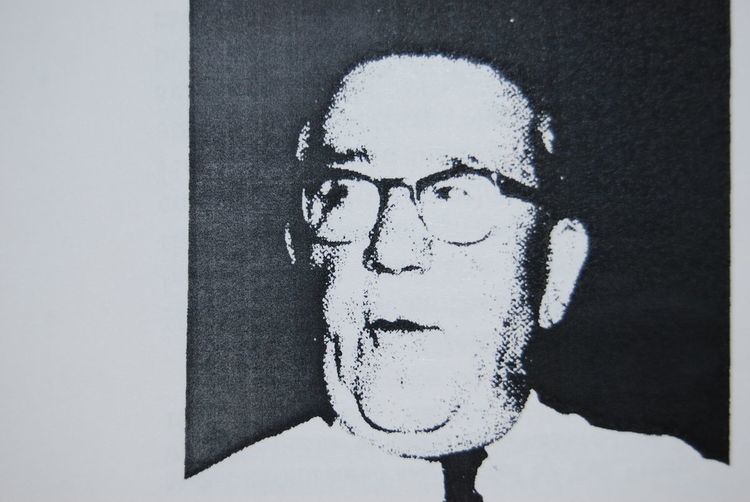Nationality American | Other names Herb Bell | |
 | ||
Full Name Herbert Anthony Zwiebel Born May 19, 1890 ( 1890-05-19 ) Burlington, Wisconsin Occupation Co-founder of Packard Bell Company Known for Radio and television sets sold west of the Rocky Mountains and defense electronics | ||
Packard Bell was an American regional radio manufacturer founded in 1933 by Herbert A. Bell and Leon Packard. Packard Bell expanded into defense electronics during World War II. After the war ended, they started manufacturing other consumer electronics, such as television sets. Teledyne acquired the business in 1968. In 1986, Israeli investors bought the name for a newly formed personal computer manufacturer, Packard Bell.
Contents
History
The original Packard Bell was founded in 1933 in Los Angeles, California, USA, by Leon S. Packard and Herbert A. Bell as a maker of consumer radios. Often websites state the company has the founding date of 1926. In 1926, the founder Herb Bell was part owner of Jackson Bell Co of Los Angeles. Jackson Bell closed in 1933.
The following summary is from "Los Angeles Radio Manufacturing- The First Twenty Years (1922-1942)" by Floyd A. Paul
The original Packard Bell name began in September 1933. Herb Bell (birth name Herbert Anthony Zwiebel), a former business partner of Jackson Bell Radio Company in Los Angeles, formed Packard Bell with Leon S. Packard who was previously from radio manufacturing in San Francisco. Jackson Bell went into receivership that year due to financial problems. Jackson Bell was one of the few RCA-licensed radio manufacturers on the west coast of the United States. Bell partnered with Leon S. Packard. In 1934 they marketed their first radio the Model 35A (carryover from Jackson Bell). Herb Bell managed to obtain the RCA license for manufacturing superheterodyne radios. Based in Los Angeles, Packard Bell along with Hoffman Radio became well known regional makers of consumer electronics. Packard Bell ventured into television quickly due to the RCA royalty-free patents. Leon Packard was not very pleased with the direction of Packard Bell Company was going and asked Herb Bell to buy his share out in 1935.
Packard Bell was a family business, and he and his four brothers Arthur, Albert, Elmer and Willard participated in major departments from design, manufacturing and marketing.
Packard Bell did quite well and like Hoffman Electronics became a recognized name in regional consumer electronics. During World War II and through the 1960s Packard Bell was a very profitable company. Packard Bell expanded into defense electronics at the beginning of World War II and continued until the Teledyne buyout. One of Packard Bell products during the Second World War was an IFF transponder unit used for identifying friendly versus enemy aircraft. In 1955, the company went public and issued stock.
Packard-Bell's computer operations were acquired by Raytheon in 1964.
In 1968 Packard Bell was sold to Teledyne. Teledyne was interested in reaching further into the consumer electronics business. Teledyne converted Packard Bell common stock into Teledyne common stock at a ratio of one share of Teledyne common stock for each seven and one-half shares of Packard Bell common stock. The Packard Bell name remained, but with Teledyne ahead of it as with other Teledyne operating divisions, hence "Teledyne Packard Bell".
"Stationizing"—A Packard Bell distinguishing feature
Packard Bell radios had a unique styling that makes them easy to identify. Being a US West Coast radio maker, they maintained that image by "stationizing" their radio dials. Major US West Coast and Canadian (west of the Rocky Mountain range) radio station call letters were printed on the tuning dial. From 1926 through 1950, the marketing area for Packard Bell radios consisted of the states of Arizona, California, Idaho, Nevada, Oregon and Washington. Many Packard Bell models made during this period have stationized dials with the call letters of the major stations from these states marked in their proper places on the dial. These "stationized" dials also include KSL 1160 in Salt Lake City and KOA 850 in Denver. This was an idea inspired by Herb's mother who had trouble reading the tuning dial. After 1950, Packard Bell discontinued its "stationized" dials when it began selling radios and televisions throughout North America.
Most famous Packard Bell radio
A Packard Bell radio was used as a prop in the 1960s American television series Gilligan's Island. The Japanese made, eight-transistor AR-851 was an important plot device over the course of the three-year run of the show. A handle and external antenna were added to the AM-only radio, presumably to make it appear more "radio-like".
Other Packard Bell business
It also manufactured some of the earliest computers, the most famous of which, the PB 250 released in 1961, was one of the last users of magnetostrictive delay lines as part of its memory. It was also the last machine to be partially based on the original designs of Alan Turing’s NPL Pilot ACE computer. In the 1960s, Packard Bell was also in the defense electronics business.
Founders
There is very little information on Leon S. Packard. The growth of Packard Bell was mainly from Herbert and his brothers, Arthur, Albert, Elmer and Willard. Born Herbert Anthony Zwiebel in 1890, his parents were Anthony (Anton) Zwiebel Jr and Anna Mary Brehm. Like many descendants of immigrants, there was the desire to acquire "American"-sounding names, so Herbert changed his last name to Bell. In his leisure time, Herb Bell was an avid boater and owned several pleasure crafts and yachts. He had a 98-foot yacht which he later donated to the Scripps Institution of Oceanography. He had them docked at Newport Harbor (Newport Beach, California) and often sailed from Newport Harbor to Catalina Island. He named his boats the Five Bells referring to him and his brothers.
